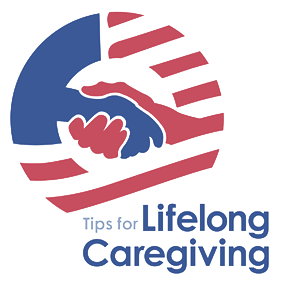About Us
Information and Using the Site
DoD, the VA, and other governmental organizations have committed significant resources and funding to address the needs of severely wounded warriors who face the most catastrophic and life-altering injuries and their caregivers. But it’s not enough. Very little is known about how to provide the resources and support services that are necessary to sustain military caregivers over the lifetime of their caregiving role.
Wounded warriors and their caregivers generally praise the medical care they receive in the military and veterans’ health care systems. However, once outside of these systems, military caregivers report being less confident and secure in their roles as lifelong caregivers and unsure of the future or how to manage a lifetime of transitions as medical conditions change or as their veterans age. Caregivers shoulder a massive level of responsibility in meeting the immediate needs of loved ones, while trying to plan for the days and years ahead.
Military caregivers often must rely on the advice of multiple medical and benefit systems that are complicated and, at times, uncaring or uninformed — systems that expect you to make immediate, critical financial and legal decisions without fully understanding the long-term implications for you and your loved ones. You need resources and assistance from reliable sources to help make contingency plans for your lifelong well being. You need factual and timely financial and legal tools that are comprehensive and specific to caregivers’ needs — and currently those tools do not exist in the DoD or VA systems.
That’s why MOAA proposed to work with The Elizabeth Dole Foundation to develop this site. MOAA, in collaboration with its partners, provided the labor, expertise, project management, and associated work to develop and implement this guide. The online financial/legal tool, which aids caregivers in contingency planning and decision-making, is available to the public and serves to supplement existing programs supported by The Elizabeth Dole Foundation, DoD, the VA, and other agencies and individuals.
In six years of conducting symposia and roundtable discussions at MOAA signature events, caregivers say help is needed in planning for emergency and future situations, particularly legal and financial matters related to such issues as:
- medical/disability insurance and benefit programs (e.g., Medicare and Medicaid, Social Security, Aid and Attendance, in-home and nursing care, retirement annuities/Survivor Benefit Plan);
- guardianship;
- fiduciary matters;
- powers of attorney (durable/non-durable, financial, medical, military, benefit, tax, debt);
- advance directives;
- legal pro bono services and resources;
- wills; and
- financial/estate planning.
The website has been developed for and by caregivers and represents the collective needs, personal experiences, and struggles faced in planning for contingencies and emergencies — information regarding military and veterans’ benefits, finances, and legal issues during or after transitioning from the military the members of the caregiver advisory panel wished they had known as they began their roles as caregivers.
In executing this grant, MOAA extended its working partnerships with USAA Educational Foundation, the American Bar Association, and VetsFirst. Additionally, MOAA, the USAA Educational Foundation, and the American Bar Association solicited advice and contributions from existing warrior-family round-table partners as well as:
- FINRA Investor Education Foundation;
- veteran and military service organizations;
- DoD-VA caregiver and care coordination programs;
- Tragedy Assistance Program for Survivors (TAPS);
- National Resource Directory;
- Dole Foundation caregiver fellows; and
- RAND Corp.
This website is organized as though the servicemember’s disabling condition occurred during a time of military service. It follows a linear timeline from when the servicemember incurred the wound, injury, or illness through retiring or separating from the military and entering into the VA, applying for Social Security, and navigating financial and legal issues.
The website is a collaboration among several organizations after many discussions with a caregiver advisory panel. Because of that, the guide is presented in many voices and flows as though you were listening to a panel discussion. In some instances, different authors present the same information in separate categories. This technique was used for two reasons: 1. Caregivers of veterans whose disability paths do not follow the traditional timeline won’t miss necessary information if they skip sections of the website. 2. Different explanations of the same complex material by different authors might better help caregivers understand the particular issues with which they are dealing.
Content is this website deals with very complex issues. Each author has tried to make the content as simple as possible without losing the complexity that surrounds some of these issues. In some cases that was easier than others. You might see the terms “your veteran” or “my veteran.” Usage of the pronouns “my” and “your” is to imply a relationship or connection, not to imply ownership of the veteran. Whenever possible, the phrases “the veteran for whom you care” or “the veteran for whom I care” were used. Occasionally the usage of those phrases complicated the content, so the simpler phrase was used.
In the case of terms “veteran” or “wounded warrior,” not all veterans are injured in combat, not all veterans fall ill during military service, and not all veterans see themselves as wounded warriors. Unless a particular item of discussion is limited to those injured in combat, the more general term “veteran” is used.
The website is something that is constantly changing and we invite that. MOAA and its partners would like to see the guide continue to grow. Feedback and suggestions are appreciated.
Contact us at: caregiverfeedback@moaa.org


